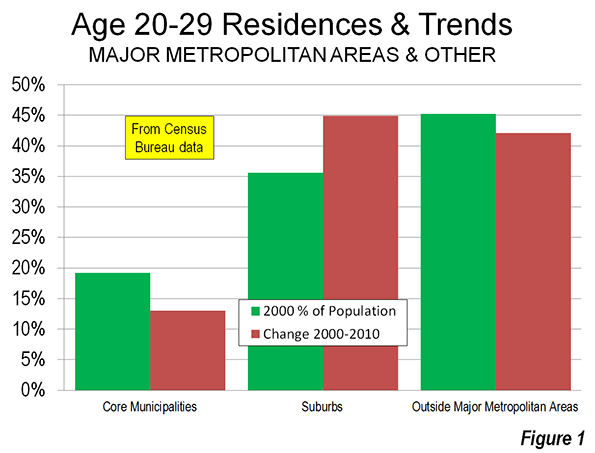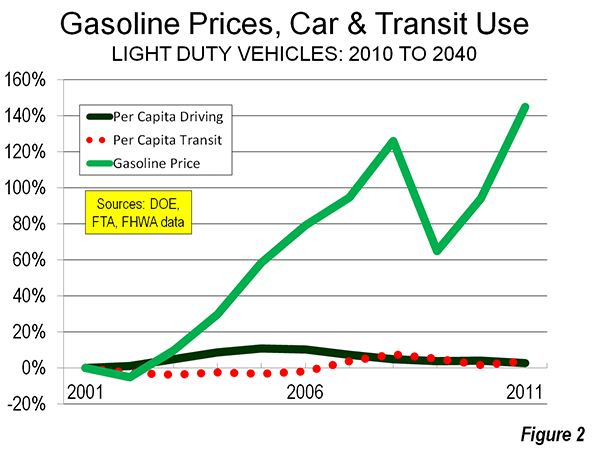Oil: Straight Talk on The Recent Declines in Miles Driven
From New Geography:
There are grains of reality, misreporting and exaggeration in the press treatment of a report on driving trends by USPIRG.
The report generated the usual press reports suggesting that the
millennial generation (ages 16 to 35) is driving less, moving to urban
cores, and that with a decline in driving per capita, people are switching to transit.
These included the usual, but not representative anecdotes about
people whose lifestyles and mobility needs are sufficiently served by
the severe geographical and travel time limitations of transit.
Further, in an important contribution, the USPIRG report provides
driving trend forecasts that are lower than other projections. If
accurate, these would result in materially greater greenhouse gas
emissions reductions to 2040 than projected by the Department of
Energy, further undermining the justification for anti-mobility policies as well as urban containment.
Millennials and More Urban and Walkable Living
It is again reported that millennials "like to live in the city center." Last year, a report by USPIRG cited a poll indicating that 77 percent of millennials plan to live in urban cores. Their actual choices have been radically different.
In fact, 2010 census data indicates that people between 20 and 29 years old were less inclined to live in more urban and walkable neighborhoods than their predecessors.
In 2000, 19 percent of people aged 20 to 29 lived in the core
municipalities of major metropolitan areas, where transit service and
walkable neighborhoods are concentrated. Only 13 percent of the
increase in 20 to 29-year-old population between 2000 and 2010 was in
the core municipalities. By contrast, the share of the age 20 to 29
living in the suburbs of major metropolitan areas was 45 percent,
higher than the 36 percent living there in 2000 (Figure 1).

The Decline in Driving
Driving per capita in urban areas peaked in 2005. Between 2005 and
2011, driving declined seven percent. In the context of rising gasoline
prices, and economic trends, the real news is not how much driving has
fallen, but rather how little. A seven percent reduction is slight
compared to the one and one-half times increase in gas prices over the
past decade (Figure 2). Per capita travel by car and light truck has
fallen back only to 2002 levels, which remained above the driving rates
of previous years.
Drivers: Not Switching to Transit
The USPIRG report gives the impression that instead of driving,
Americans are switching to other modes of transport, principally
transit. In discussing the report, Nick Turner, of the Rockefeller
Foundation said: "Americans are making very different transportation
choices than they did in years past."...MORE

